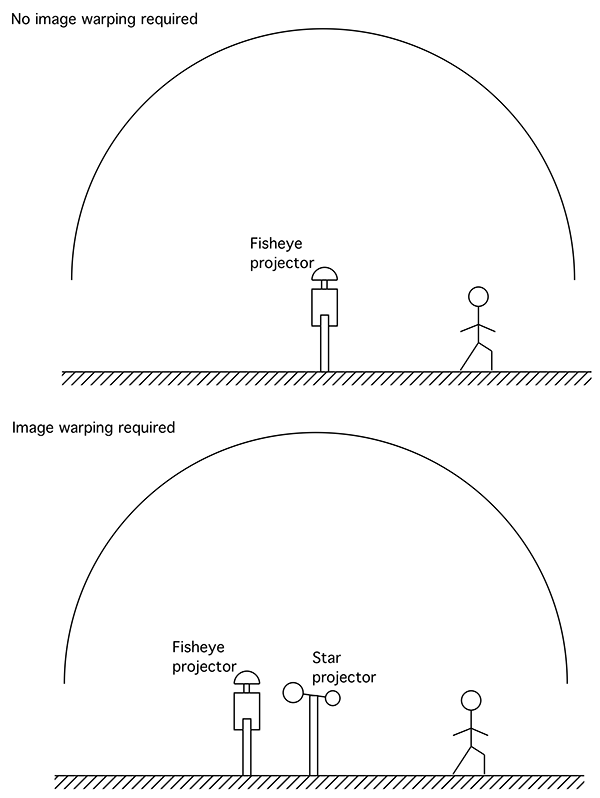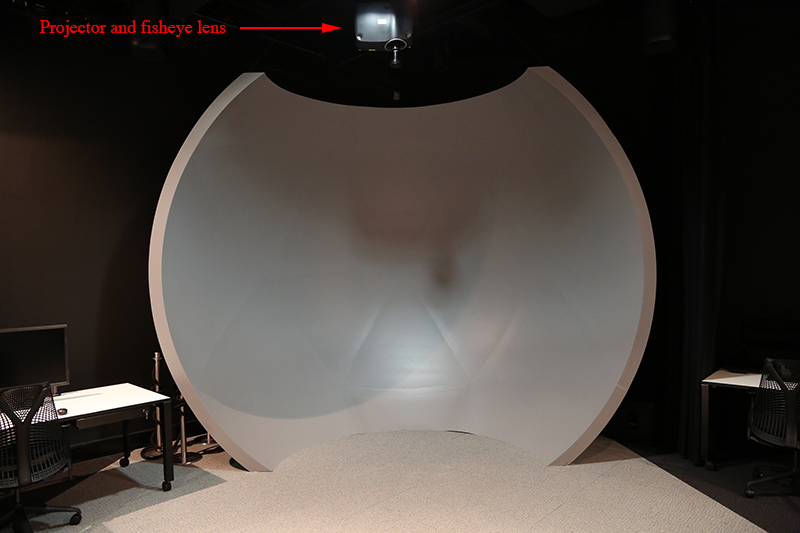Why warp?Paul BourkeJuly 2014 Update: The warping described here is now implemented and described here: Dome Projection and Calibration for Offaxis Fisheye Lenses
The following will describe reasons why one needs to warp (often called image correction) fisheye images before presenting them in a dome environment. This is targeted at single projector systems mainly because those developing multiple projector systems are well aware of the need to warp the images sent to the projectors. If one did not need to warp then it would make software simpler and hence software developers would like to avoid the issue, there are plenty of examples of this if one looks at the current range of astronomy software offerings which while they might provide fisheye images either ignore the practical requirement for image warping or only provide solutions for very narrow/precise situations. Fisheye image warping is often associated with the spherical mirror projection system developed by the author. This will not be discussed further here since there are any number of documents describing the process here. Suffice to say that since a spherical mirror is placed between the projector and the dome, the imagery on the dome would look horribly distorted if one did not warp it. This warping needs to take account of the optics and geometry of the whole system in order for the fisheye to appear correct on the dome surface. The information on how to warp the fisheye is encapsulated in a mesh described here and here. While there are other bespoke methods this approach is extremely general and can handle all the cases outlined here as well as others. What is not often realised is that fisheye warping is also very often required for single projector system employing a fisheye lens. There are a number of practical situations where this is necessary and they will be described below.
Non centered fisheye lens 
Well off center fisheye lens 
Not all fisheye lenses have a perfectly linear mapping between radius on the fisheye plane and longitude, indeed most do not. This leads generally to a compression of the image towards the spring line of the dome. This and other practical matters (such as fisheye lens centering) can be readily corrected by an image warping. |
